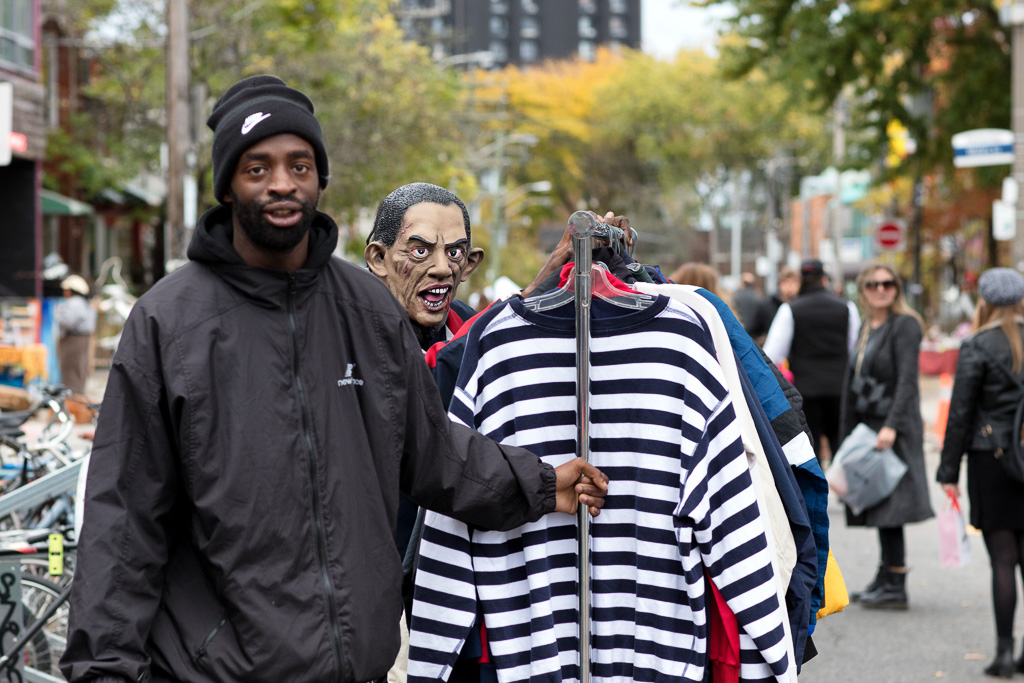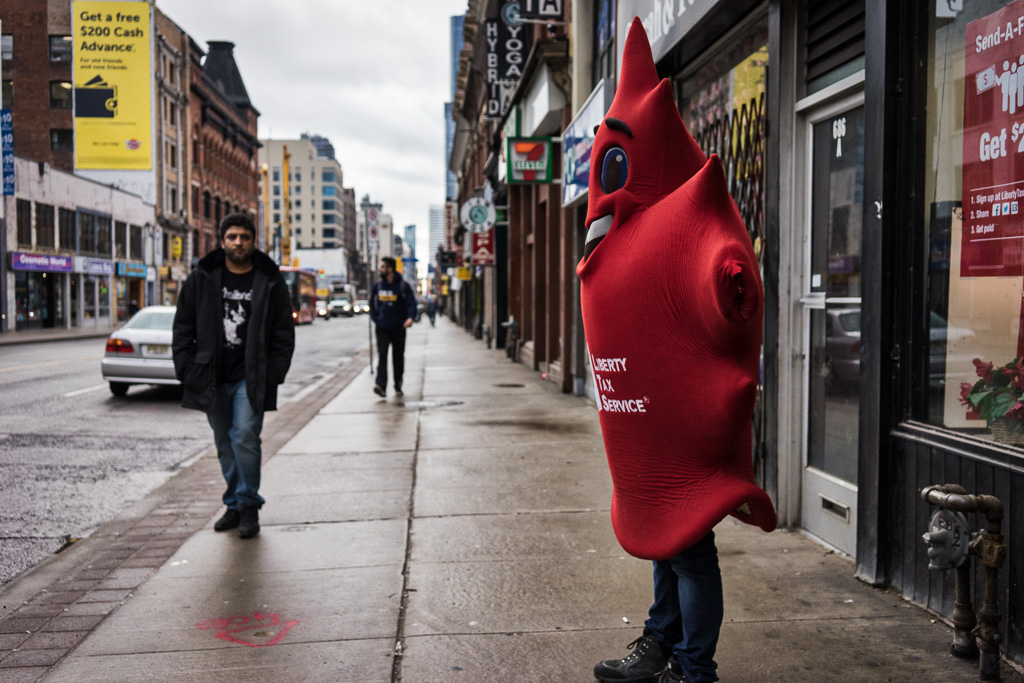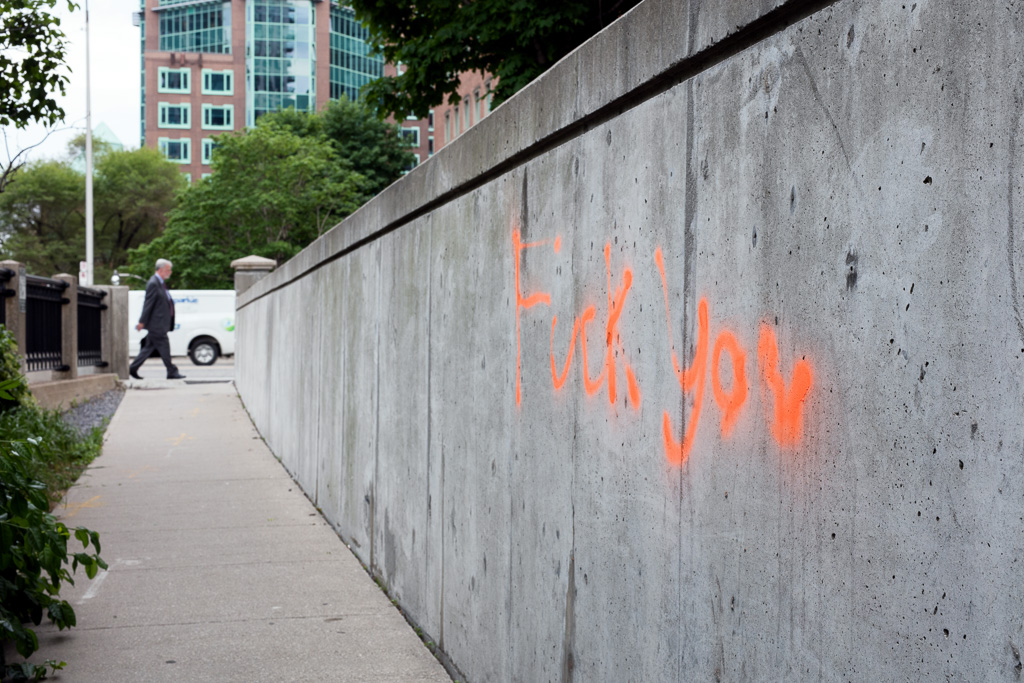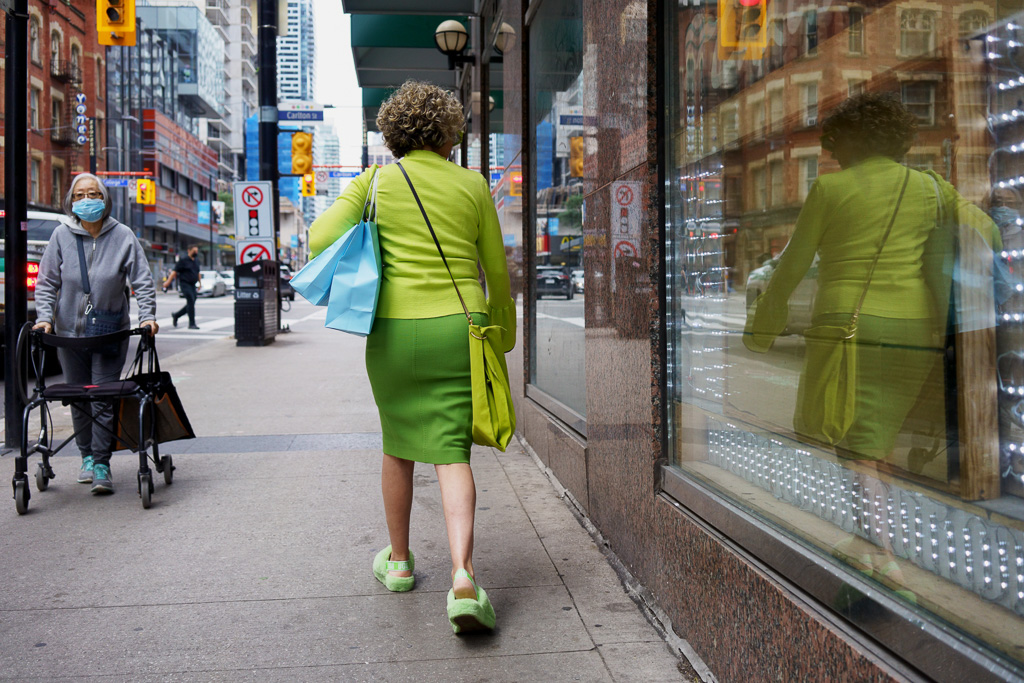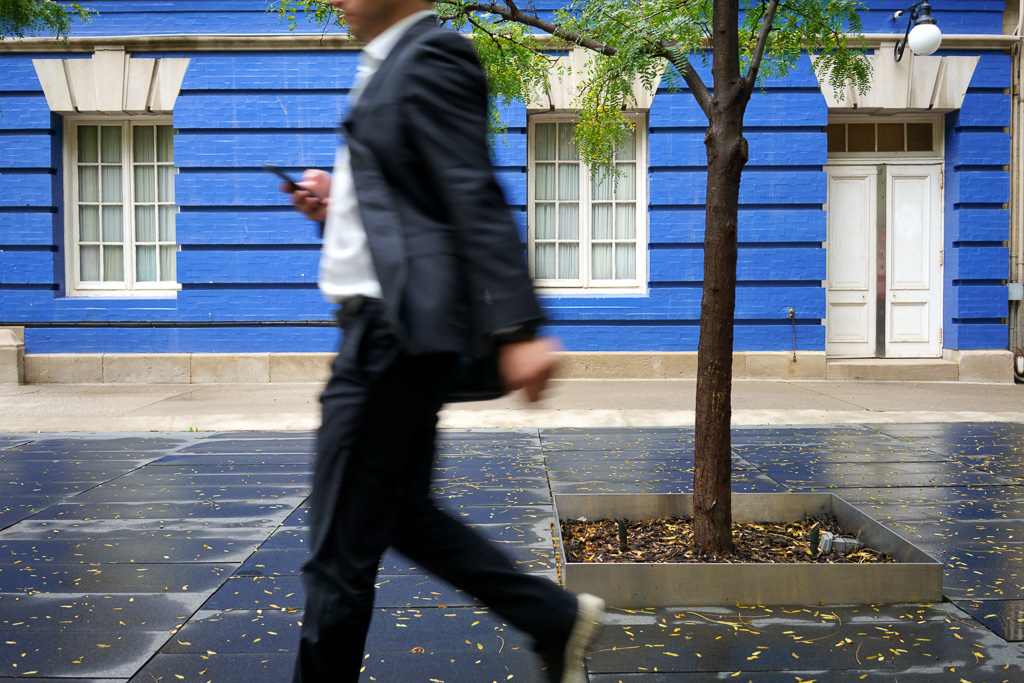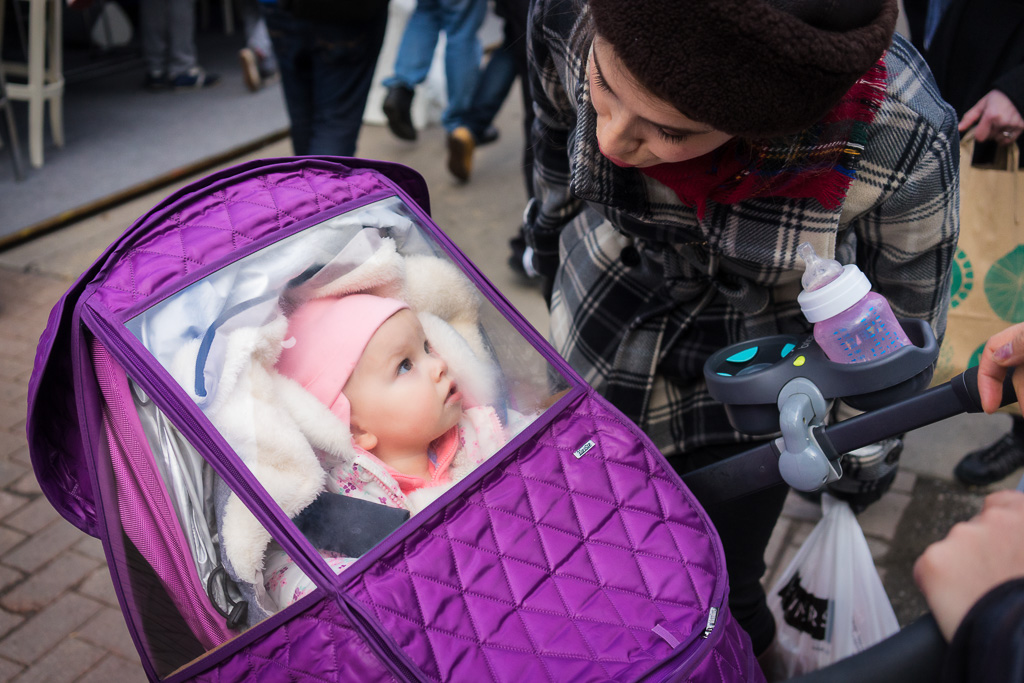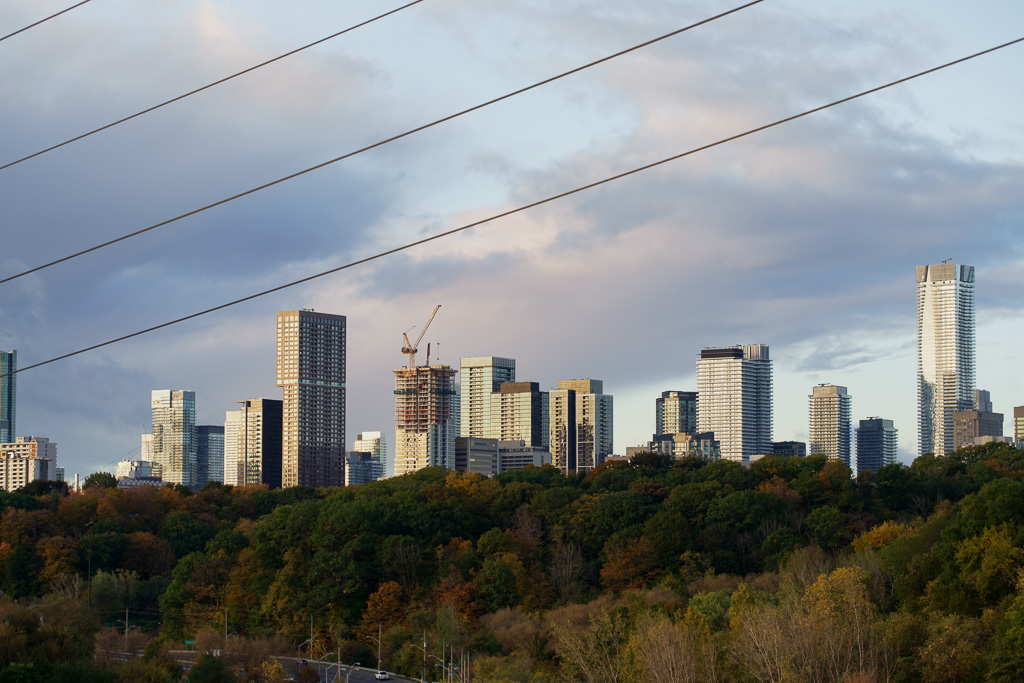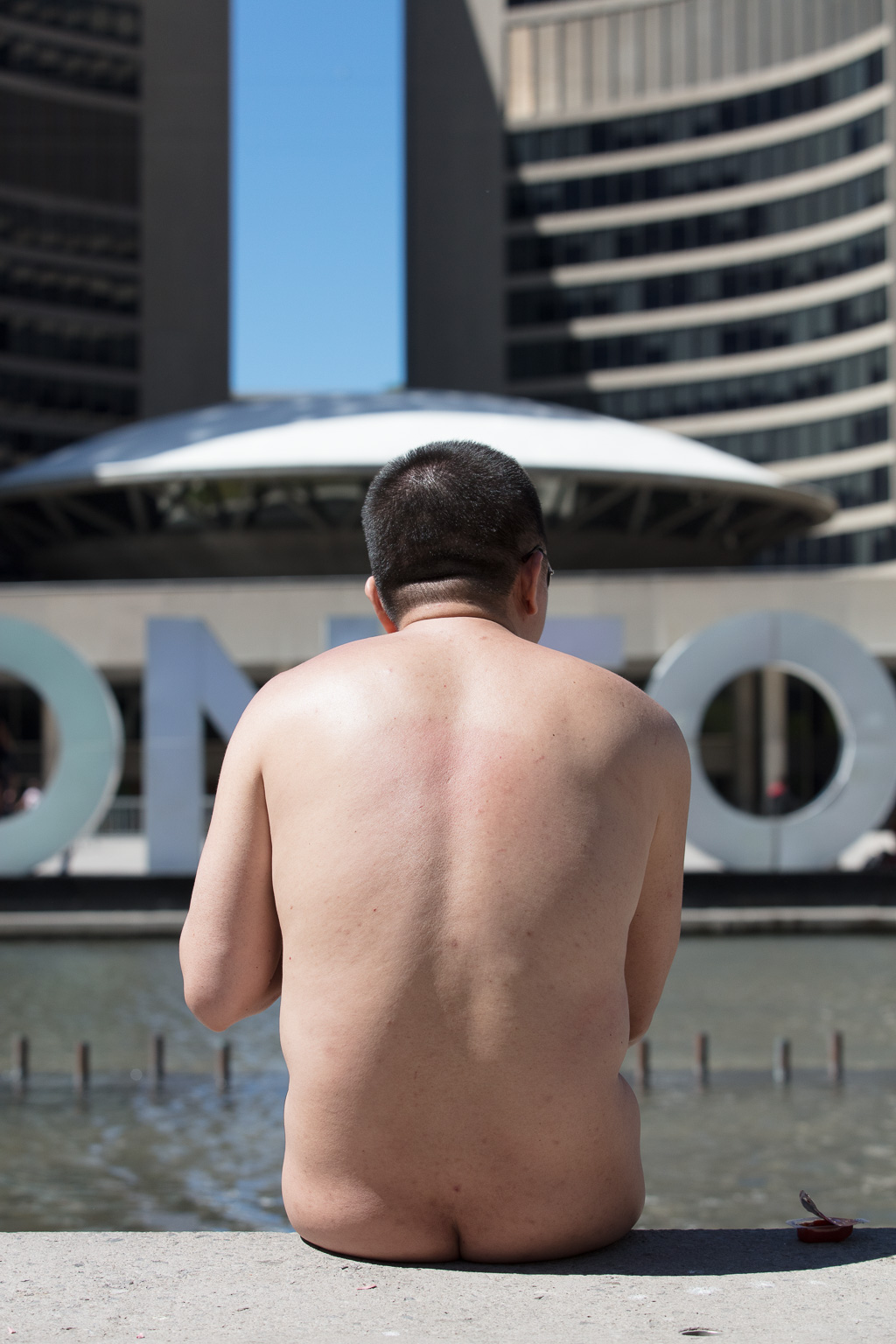
I was standing beside the entrance to the Buchanan Street underground, shooting south down to the Clyde River, mesmerized by the reflective surface of the polished rock, when a young girl (and her reflection) stepped into my frame. How could I not make the shot? I’m not sure what she was thinking but I suspect it was simple curiosity: what is that man doing with that funny-looking box in his hands? There is something satisfying about this shot—the reflection, the way the perspective lines all lead us to the girl, the red bow in her hair, the simple expression of innocence—so that I’ve ended up including it in my portfolio.
A child on a Glasgow street, she reminds us why we’ve tasked our world leaders to gather nearby and hammer out an agreement to limit climate change. She is emblematic of our future. We do this for her.

